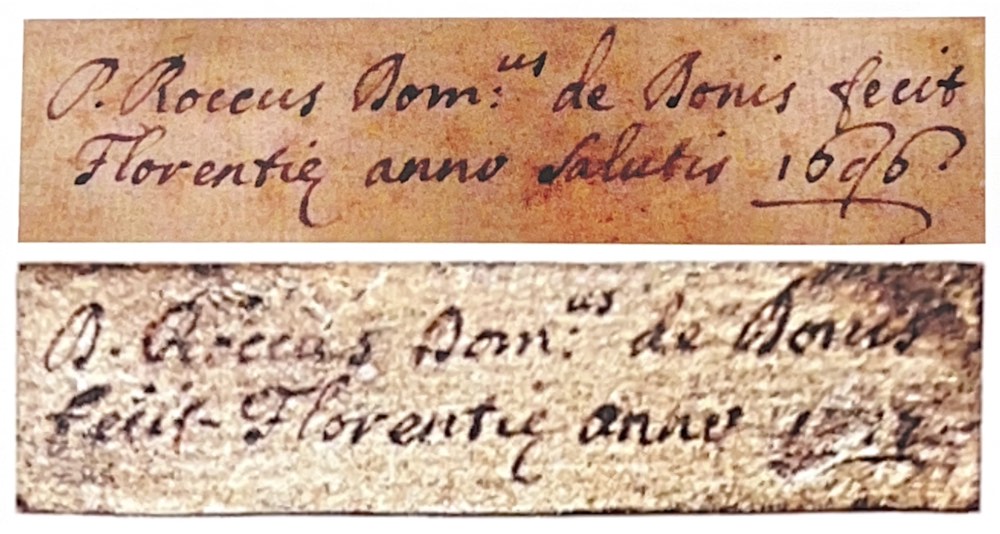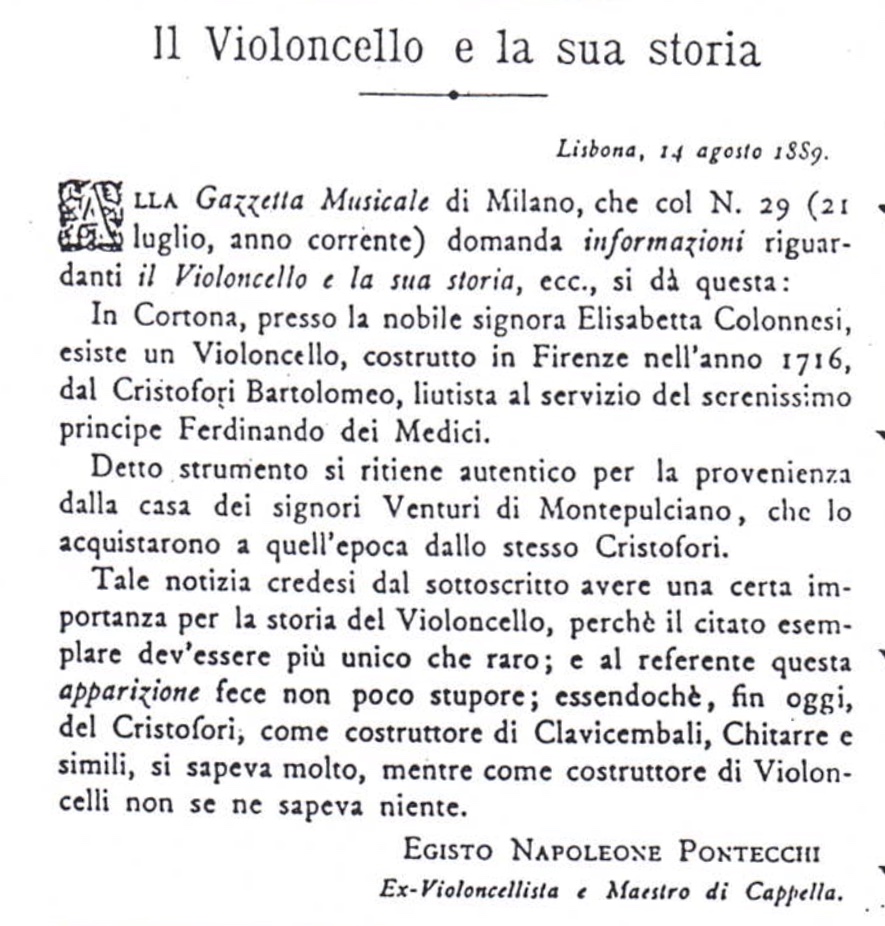Bartolomeo Cristofori was born in Padua on May 4th, 1655, and was hired by Ferdinando de Medici, the Grand Prince of Tuscany, as an instrument maker and repairer in 1688. Ferdinando was an accomplished harpsichord player and a devoted patron of music and the arts. He built up an entourage of musicians and artists from all over Europe, and made Florence a center of musical excellence and innovation. During the time of Cristofori’s employment at Ferdinando’s court, the Medici collection included a variety of keyboard and stringed instruments including examples by Amati and the important Stradivari ‘Medici’ quintet.
Cristofori was paid a generous salary and given an apartment and a budget for expenses. From the bills and receipts that Cristofori submitted to the court, as well as other contemporaneous accounts, we know that he had a certain autonomy with regards to the other craftsmen in the Ulffizi’s Galleria dei Lavori (the Medici workshops) and that there was great variety in the scope of the work he did for the Prince. His responsibilities, at least for the first ten years of his employment, were to maintain and repair the keyboard instruments of the Prince’s collection and to fabricate new keyboard instruments for the court.
In around 1700, Cristofori invented an instrument that forever changed the course of musical history, “un Arpicimbalo, che fa il piano, e il forte” (a harpsichord that could play soft and loud). The genius behind Crisofori’s pianoforte was that the hammers struck the strings proportional to the force applied by the player thereby creating different volumes and qualities of sound. To enable this effect, Cristofori invented a special ‘escapement’ mechanism: When a key was pressed, a hammer struck the string and then immediately fell away, allowing the string to resonate freely until it was again dampened as the key was released.
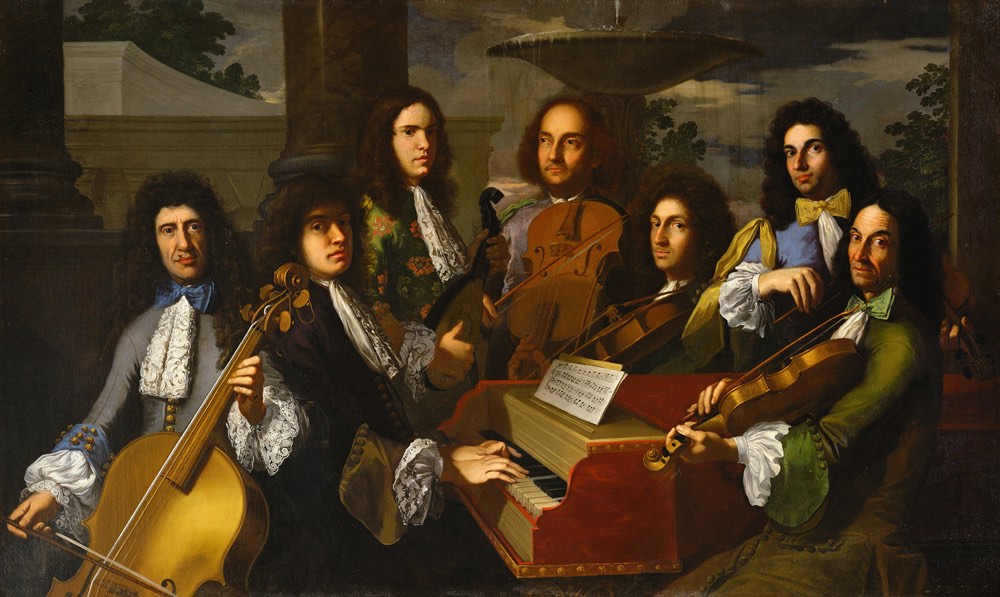
One of several paintings by by Anton Domenico Gabbiani depicting musicians at the service of the Grand Prince Ferdinando 1685-90. (Firenze, Galleria Palatina)
It is speculated that Cristofori made around a dozen pianos but only three survive to this day (in the Metropolitan Museum of Art, New York, the Museo Strumenti Musicali, Rome, and at the Musikinstrumenten-Museum at Leipzig University). Cristofori’s invention wasn’t widely adopted during his lifetime; in fact, it seems there was little fanfare around the instrument’s debut when it appeared in the Medici musical inventory of 1700. But by the mid-century, the pianoforte had altered music history forever.
The nature of Cristofori’s activities for the court changed shortly after the turn of the century. For various reasons, he ceased to receive his monthly stipend in around 1698 and then, when Prince Ferdinando died in 1713, Cristofori’s official patronage came to an abrupt end. Ferdinando’s father, Cosimo III, appointed Cristofori to be curator (custode) of the musical instrument collection in 1716 but it is unclear if this new position was compensated at a similar level, if at all. Though Cristofori’s official duties at the court diminished, he continued to make new instruments, some of which were destined for the Medici collection and some of which, it appears, were made for private clients.
Many aspects of Cristofori’s life remain unknown. Until recently, most sources insisted that Cristofori was an apprentice to Nicolò Amati in Cremona, which we now know is not true. The confusion originated with the fact that a 13 year-old boy named “Cristoforo Bartolomei” was listed in the 1680 census return of the Amati household. The will to see these two strands of musical history converge was so strong that it suppressed the inconvenient detail that Bartolomeo Cristofori, the inventor of the pianoforte, was, at nearly 25 years old in 1680, too old to be the live-in apprentice to a master. Although their names are similar, the two instrument makers cannot be the same person. This coincidence was first observed by the 19th century musicologist Marquis Giovanni de Piccolellis in his book Liutai Antichi e Moderni (1885) and was echoed elsewhere in the violin literature. To his credit, Piccolellis noted that the similarity of names might be only a coincidence and acknowledged that Cristofori’s birth year of 1655 was seemingly incompatible with the almost homonymous apprentice in the Amati workshop.
The will to see these two strands of musical history converge was so strong that it suppressed the inconvenient detail that Bartolomeo Cristofori, the inventor of the pianoforte, was, at nearly 25 years old in 1680, too old to be the live-in apprentice to a master.
Although we know almost nothing of Cristofori’s education and training, we can assume that there must have been something attractive to the music-loving Prince as the evidence suggests that Cristofori was actively recruited to join the court. A contemporary source quotes Cristofori as saying that he didn’t want the job but the Prince made him an offer he couldn’t refuse (che fu detto al Principe, che non volevo; rispos’ egli il farò volere io).
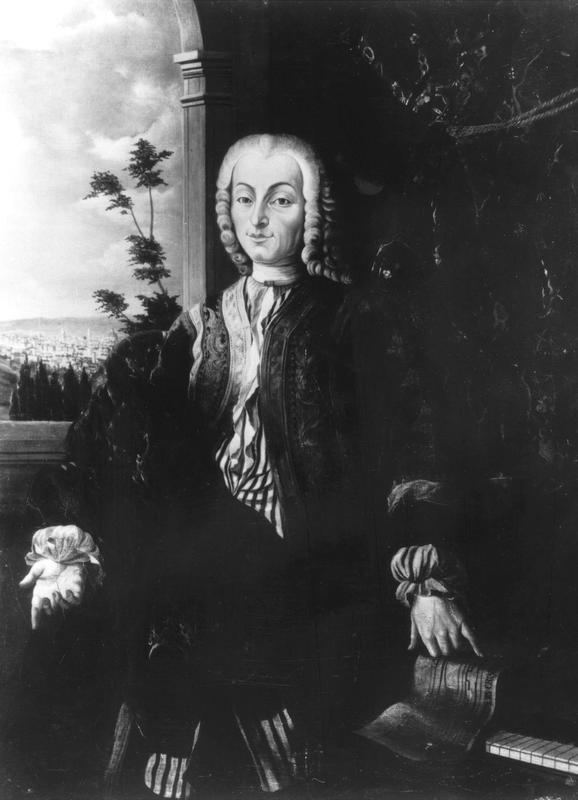
A photograph of a portrait of Bartolomeo Cristofori from 1726. The original was lost in the Second World War.
The most conspicuous gap in our knowledge, however, is the scope of Cristofori’s involvement with stringed instruments. We have copious records of his work repairing and adjusting keyboard instruments, but there are no records concerning the maintenance or construction of bowed stringed instruments. To put it bluntly, there is no documentary evidence that Bartolomeo Cristofori ever trained or worked as a violin maker.
I know of six Cristofori instruments: four cellos, a violin and a double bass. Although few in number, they are remarkably similar in wood choice, varnish, edgework, soundholes and heads and they are consistent enough to confirm that they were made by the same hand. The congruence is confirmed by the general style and appearance and also by quirky particulars, like the fact that the middle strand of the purfling is made of maple in the instruments I have examined. The cellos are made on the same model—a model that we will see was readily ‘at hand’ to the curator of the Medici collection. Dendrochronological examinations support the dates in which these instruments are believed to have been made. The workmanship is refined, confident and unlike the work of an amateur. The proficiency of the arching, the precision and symmetry of the purfling, the fluidity of the soundholes, and above all, the grace of line throughout, give testimony of a proficient master maker.
Should we be concerned that there are so few stringed instruments attributed to Cristofori? I don’t think so. In fact, we can be grateful that there are twice as many surviving stringed instruments as there are pianos(!)
Should we be concerned that there are so few stringed instruments attributed to Cristofori? I don’t think so. In fact, we can be grateful that there are twice as many surviving stringed instruments as there are pianos(!)
The label in this cello is unconventional: a strip of parchment glued to the center joint of the inside back bearing the inscription, “Bartolomeo Cristofori in Firenze 1716.” The surface of the parchment has deteriorated and the script seems to have been overwritten in an effort to enhance it. Perhaps in earlier times it was more legible as both Alfred Hill and Charles Beare insisted that the label was original when they sold and certified the instrument in 1937 and 1987 respectively.
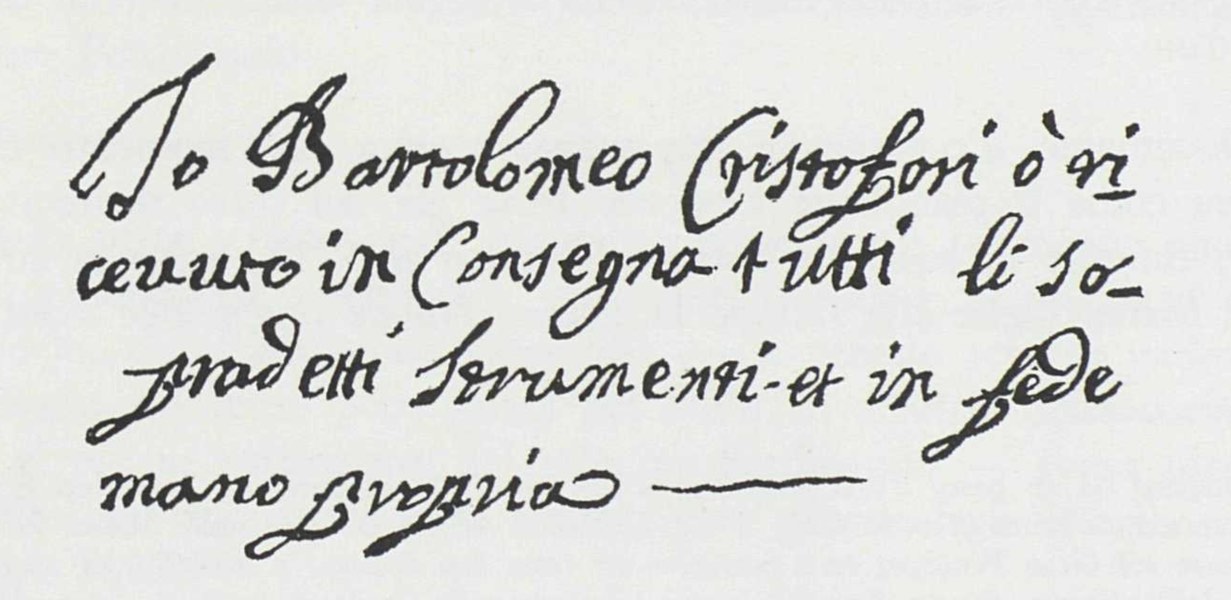
Cristofori’s signature on his 1716 inventory of the Medici collection. (Archivio di Stato dì Firenze)
The dimensions of this cello have not been altered and the back length is 78.2 cm. It’s not surprising that this is a large model cello; the newer smaller-pattern cellos like Stradivari’s forma b were only beginning to come into fashion in the early part of the 18th century. Cities like Florence and Rome continued the tradition of making large model bassettos well past the middle of the century.
It’s obvious why this instrument was chosen as a model; it was the best cello in the Medici collection.
It’s also no surprise which instrument, specifically, was chosen as a model. Two years after Cristofori relocated to Florence, a special delivery of stringed instruments arrived to the Medici court that, no doubt, fascinated and inspired the many musicians and instrument makers of the court. In 1684 the Cremonese Marchese Bartolomeo Ariberti commissioned a quintet of instruments from Antonio Stradivari as a gift for the Grand Prince Ferdinando. The instruments were delivered six years later and the 1690 ‘Medici’ cello has resided in Florence ever since. In 1863, it was added to the collection of the Conservatorio Luigi Cherubini and is currently exhibited in the Museo degli Strumenti Musicali, a part of the Galleria dell’Accademia.
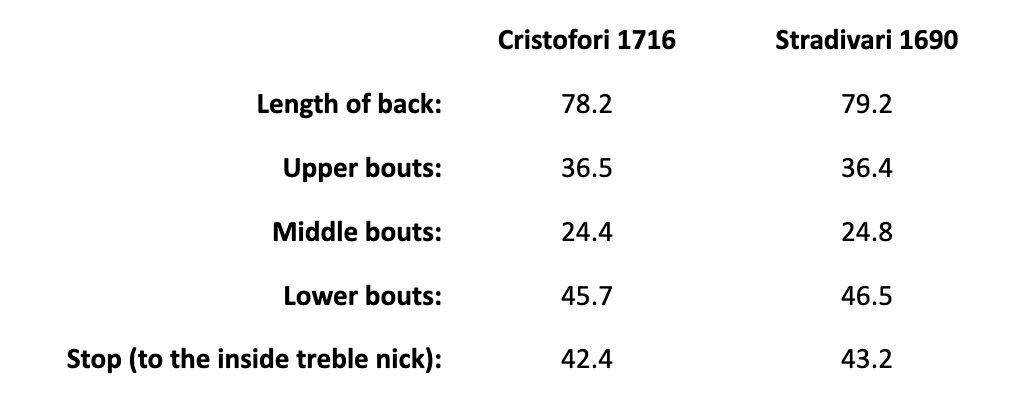
Dimensions of this 1716 Cristofori cello compared with Stradivari’s 1690 ‘Medici’.
For the entire history of violin making, makers have learned from and copied the instruments that lived nearby (in Paris, Jean Baptiste Vuillaume copied the ‘Duport’, but in Brussels, his younger brother copied the ‘Servais’). The dimensions, proportions and curves of this Cristofori cello are a near perfect match to those of the ‘Medici’. There are slight variations at the corners and the shape of the upper bouts has been made less round resulting in a body length which is 10mm shorter than the 1690 instrument. The placement of the sound holes is the same in both cellos but the stop length of the Cristofori is 8mm shorter, a result of the change to the upper bouts. It’s not a copy, necessarily, but it’s obvious that this instrument was chosen as the model; it was the best cello in the Medici collection.

